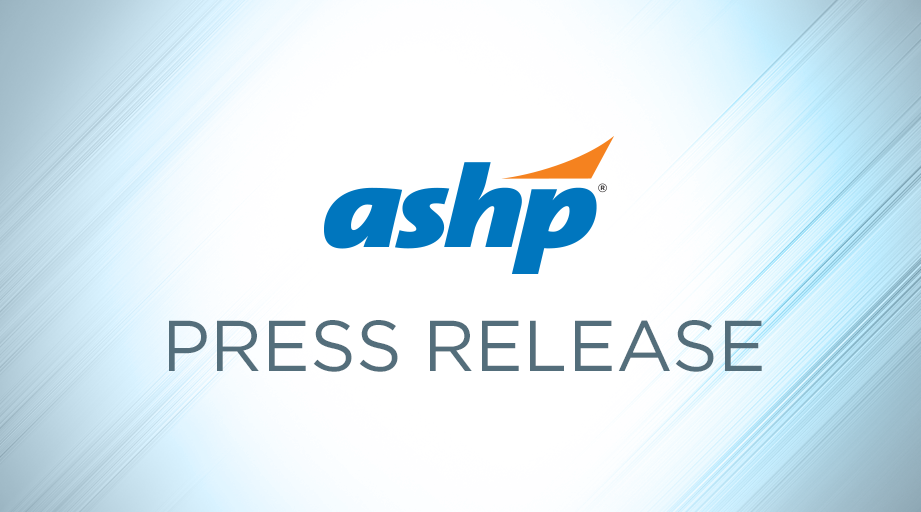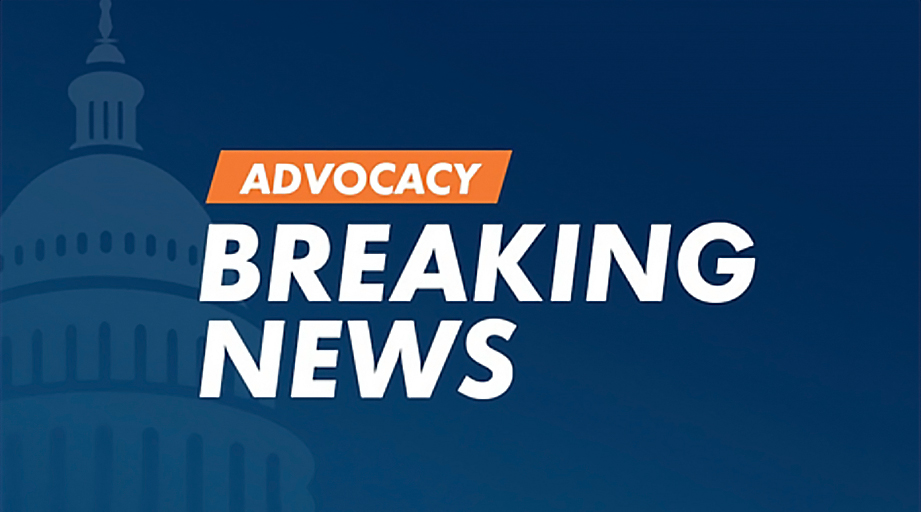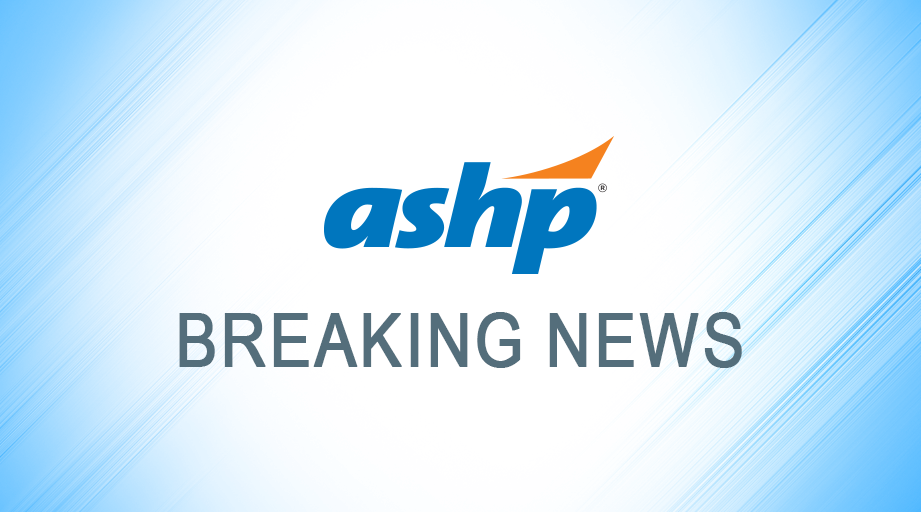
A cooperative effort involving federal agencies, manufacturers, supply chain intermediaries, and hospitals is needed to solve the nation’s drug product shortage problem, according to recommendations from an ASHP-convened stakeholders’ roundtable.
The group met on November 6 to “review and identify new opportunities to address the ongoing supply chain and patient-care challenges associated with drug product shortages,” according to a report on the meeting that ASHP released in January.
A total of 11 specific recommendations, many involving proposed action by FDA or other federal entities, emerged from the roundtable.
Christopher Topoleski, ASHP’s director of federal legislative affairs, said the report has been shared with a variety of stakeholders, including legislative staff on Capitol Hill.
“ASHP and our partners have begun to meet with staff in individual offices as well as committee staff in both chambers to reopen a dialogue on drug shortages, including the recommendations of the report,” he said.
One recommendation in the report relates to hospital operations: the development and dissemination of best practices for the use of “certain widely used and critical drugs.” The goal of that recommendation is to more efficiently use these products and, especially, to limit i.v. fluid waste.
Hospital pharmacists say they are already targeting practices that can result in unnecessary waste.
“I think everybody across the country is doing a lot of great work to try to conserve their supply,” said James Gilmore, clinical pharmacy specialist at Brigham and Women’s Hospital in Boston. “I think the best way to go about it is to have a good plan in place that recognizes on a continual, almost daily, basis how much you have of every drug that’s in danger, what your daily use is, and what opportunities you can get to guide prescribing.”
But as shortages persist, it becomes increasingly difficult to identify untapped opportunities to preserve critical drug products.
“We’ve taken care of a lot of the low-hanging fruit,” said Mimi Levinson, clinical specialist in drug information for UnityPoint Health–Meriter in Madison, Wisconsin. “I think everybody has.”
Usual practices
Levinson said one of the first things her team does when a shortage occurs is to identify and, when feasible, centralize stocks of affected medications that are located outside of the pharmacy. And she said the staff also looks at opportunities to reduce medication waste when patients transition between areas of the hospital.
For example, she said, patients often receive i.v. lactated Ringer’s injection for elective surgery procedures. When the patients are transferred from the operating room (OR) to a medical ward, the surgeons often order a different i.v. solution, and the remaining Ringer’s solution is discarded.
ASHP’s Drug Shortages resource center first reported shortages of lactated Ringer’s injection late last year. That problem has continued this year, as have shortages of other critical i.v. fluids.
To address the problem, Levinson said, “we’re looking at workflow so we can continue whatever [i.v. fluid] the patient’s on when they come from the OR, let that run out, then start a new bag rather than wasting.”
Gilmore said the same issue occurs at his hospital, which is adopting a similar strategy to reduce i.v. waste when patients leave the OR.
He said residual i.v. waste adds up and is “kind of eye-opening.” He also noted that working with the electronic health record system to identify and eliminate areas where i.v. waste occurs can be challenging.
Gilmore, who led the critical care pharmacy networking session at ASHP’s Midyear Clinical Meeting in December, said his colleagues use the same general strategies to manage shortages of i.v. solutions.
“We’re optimizing i.v. push as much as possible, trying to conserve i.v. electrolytes, trying to conserve injectable opioids,” he said. “And [we’re] really trying to force prescribers to question their impulse to do i.v. first, particularly for electrolytes and opioids,” rather than using orally administered products when appropriate.
Levinson cautioned that the need to change medication administration practices “on the fly” in response to new drug product shortages presents a potential safety risk for patients.
“We’re implementing new systems that usually we would take weeks—if not months—to analyze before we implemented,” she said. “It’s a testament to everybody’s hard work and everybody’s dedication. But at some point, I’m really worried that something’s going to happen.”
“At the end of the day, we’re just worn out,” she added.
A longstanding problem
The roundtable report calls drug product shortages “an ongoing public health concern in the United States.”
According to information provided to ASHP by the University of Utah Drug Information Service, there were a total of 183 active drug shortages during 2017, including 146 shortages that began that year. That’s down from a peak of 320 active drug shortages in late 2014 and 267 new shortages in 2011.
Manufacturers declined to provide a reason for 53% of the shortages identified last year, according to the drug information service. The roundtable report notes that FDA cannot compel manufacturers to reveal the reason for a shortage.
FDA staff participated in the November roundtable, and the group’s report includes recommendations related to the agency’s work on drug product shortages.
For example, the report asks FDA to disclose quality-related information on registered outsourcing facilities that are permitted to compound products the agency has declared to be in short supply. Such information would include detailed findings of deficiencies from FDA inspection reports and information on whether deficiencies have been corrected.
According to the report, the lack of quality-related information on outsourcing facilities “creates uncertainty for hospitals attempting to select a facility and prevents . . . outsourcing facilities from playing a larger role in mitigating the impact of drug shortages.”
FDA was also asked to implement a voluntary quality rating system for drug manufacturers and develop incentives for them to participate. The ratings would incorporate factors such as whether the company establishes manufacturing redundancies and has contingency plans for production interruptions, including those caused by disasters.
Gilmore said he briefly discussed the idea of quality ratings for manufacturers with his purchasing team.
“We kind of immediately agreed that the FDA should have 1 standard,” he said. “Having different quality ratings for manufacturers and compounding facilities, I think, would only muddy the water.”
A separate recommendation in the report asks FDA to require that manufacturers implement contingency plans for drug shortages, especially for products made by fewer than 3 manufacturers. The document also asks FDA to develop incentives for manufacturers to produce drugs that are in short supply.
Another recommendation would require manufacturers to disclose to FDA the reasons for product discontinuations and manufacturing interruptions and to estimate when shortages will be resolved.
The report also identifies action items for other federal agencies. According to the report, the Department of Homeland Security should work with manufacturers and the Department of Health and Human Services to identify and potentially fund mechanisms to improve the resilience of the supply chain and minimize disruptions after disasters.
The Federal Trade Commission, according to the report, should consider the potential for drug shortages when evaluating mergers and acquisitions among drug companies.
The roundtable report, which is available at ASHP’s website, also suggests actions for manufacturers and other participants in the drug supply chain.
[This news story appears in the March 15, 2018, issue of AJHP.]








